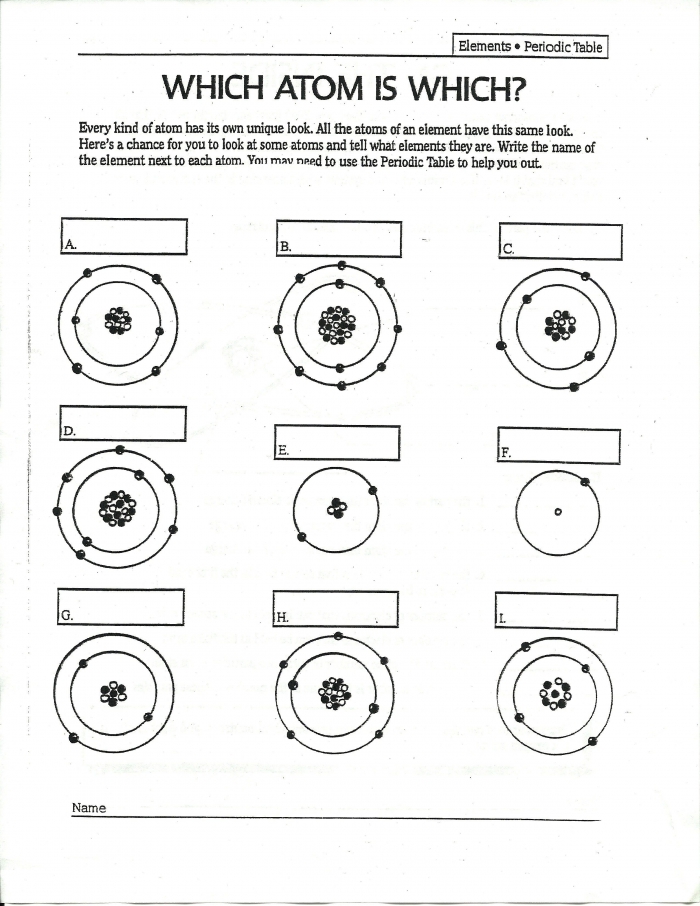

Unfortunately the names of some substances don’t always translate directly into chemical formulas. Once students are confident with word equations, you can turn to writing chemical formulas.
Chemical elements worksheet how to#
learn how to construct chemical formulas.learn to write specific word equations.learn the general word equations for the chemical reactions.carry out simple test-tube or microscale reactions.represent the reactants and products of a chemical reaction in a balanced equation.Ī general teaching sequence for formulas and equations could be:.construct word equations for reactions.name simple compounds from a chemical formula using prefixes such as mono-, di-, tri- and words such as oxide, chloride, hydroxide, sulfate, nitrate and carbonate.write formulas of elements and simple compounds using chemical symbols and numbers.can include state symbols ‒ (g), (l), (s) and (aq) ‒ that can help students visualise a reaction, and explain observations.tell us the ratio of reactants and products in a reaction ‒ eg 2Mg + O 2 → 2MgO means two lots of magnesium reacts with one lot of oxygen to give two lots of magnesium oxide.describe how substances change ‒ eg carbon + oxygen → carbon dioxide becomes C + O 2 → CO 2.provide a ratio of the elements in the substance – eg two parts potassium, 1 part sulfur, 4 parts oxygen.provide a list of the elements within the substance – eg potassium, sulfur and oxygen.provide a name for the substance – eg K 2SO 4 is potassium sulfate.Students should understand that chemical formulas:

Formulas and equations allow chemists to communicate chemical knowledge efficiently. Being able to use them correctly is part of what it means to be a chemist. Source: © Shutterstock What students need to knowĬhemical equations and formulas are a vital part of learning chemistry from 11‒19. Imagine trying to answer the question: ‘How old are you?’ without the use of numbers. Natural language is very good at naming things, but has difficulty with expressing exact amounts ‒ that’s why we use numbers. Similar problems exist when describing reactions. Even systematic names like copper chloride only provide partial information – the quantitative relationship between the elements is missing. Despite this, to a novice chemist, ammonia and sulfuric acid can be equally as ambiguous as spirit of hartshorn or oil of vitriol. Although we still cling on to a few of these names, most chemicals are now named systematically on the basis of their composition. These alchemic names may be evocative and mysterious but they don’t communicate chemical knowledge well. Have you ever put Epsom salts in your bath, taken Milk of Magnesia for indigestion or put flowers of sulfur on your roses? You probably know the chemical compositions of these products, but what about spirit of hartshorn or oil of vitriol and could you make Glauber’s salt?


 0 kommentar(er)
0 kommentar(er)
